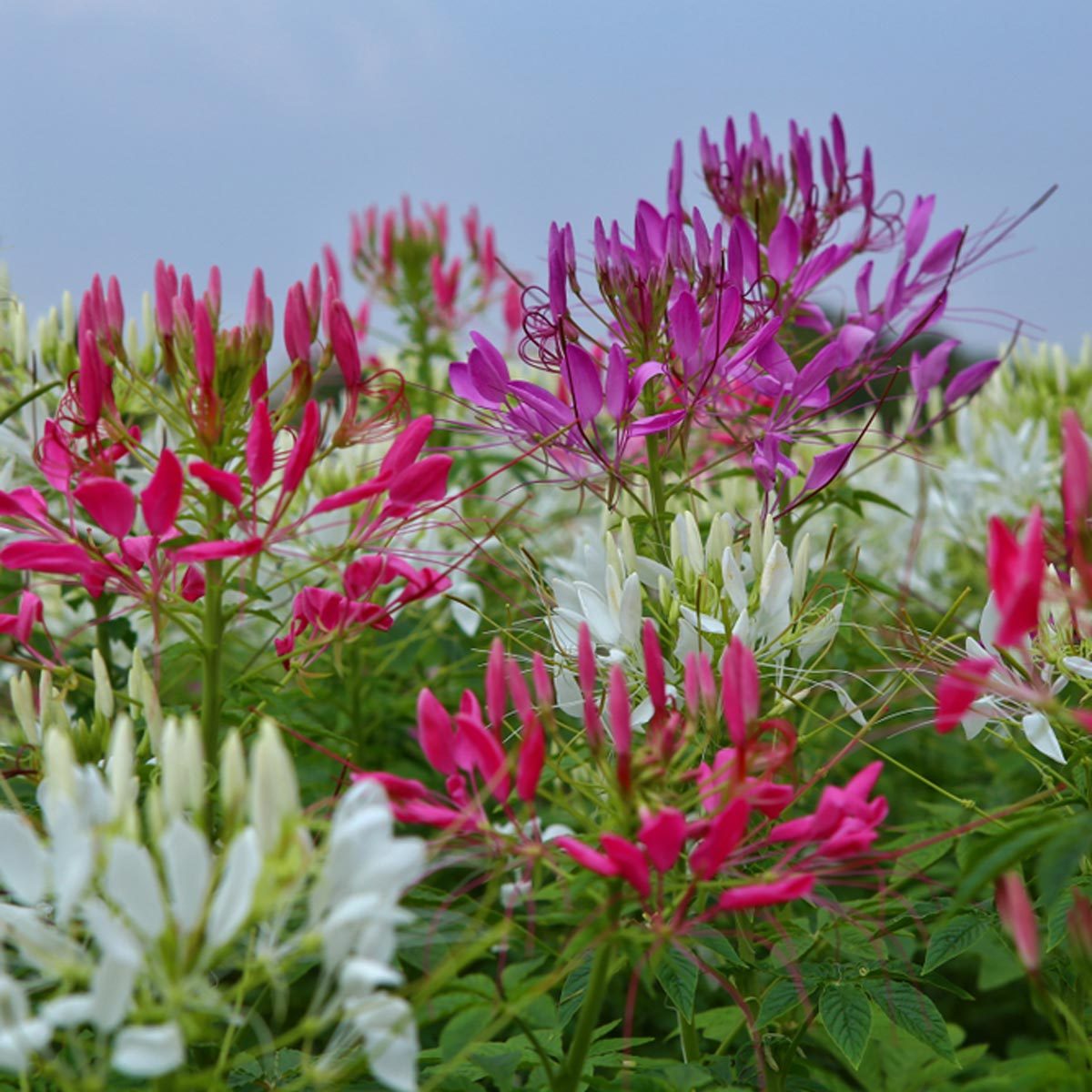
Cleome
Cleome is just one of the many self-seeding annual plants that come back year after year without any effort on your part. Also called spiderflower because of the spider-like flowers, it grows 4 feet tall or better and brandishes large pink, purple or white flowers. Although it is a vigorous self-seeder, unwanted seedlings are easy to pull when they’re young. Because of its size, cleome is not a plant to be ignored. That size also makes it a great back-of-border plant in a flowerbed.
No back yard? No problem! Use these urban gardening tips to add greenery to even the smallest porch, patio or balcony.
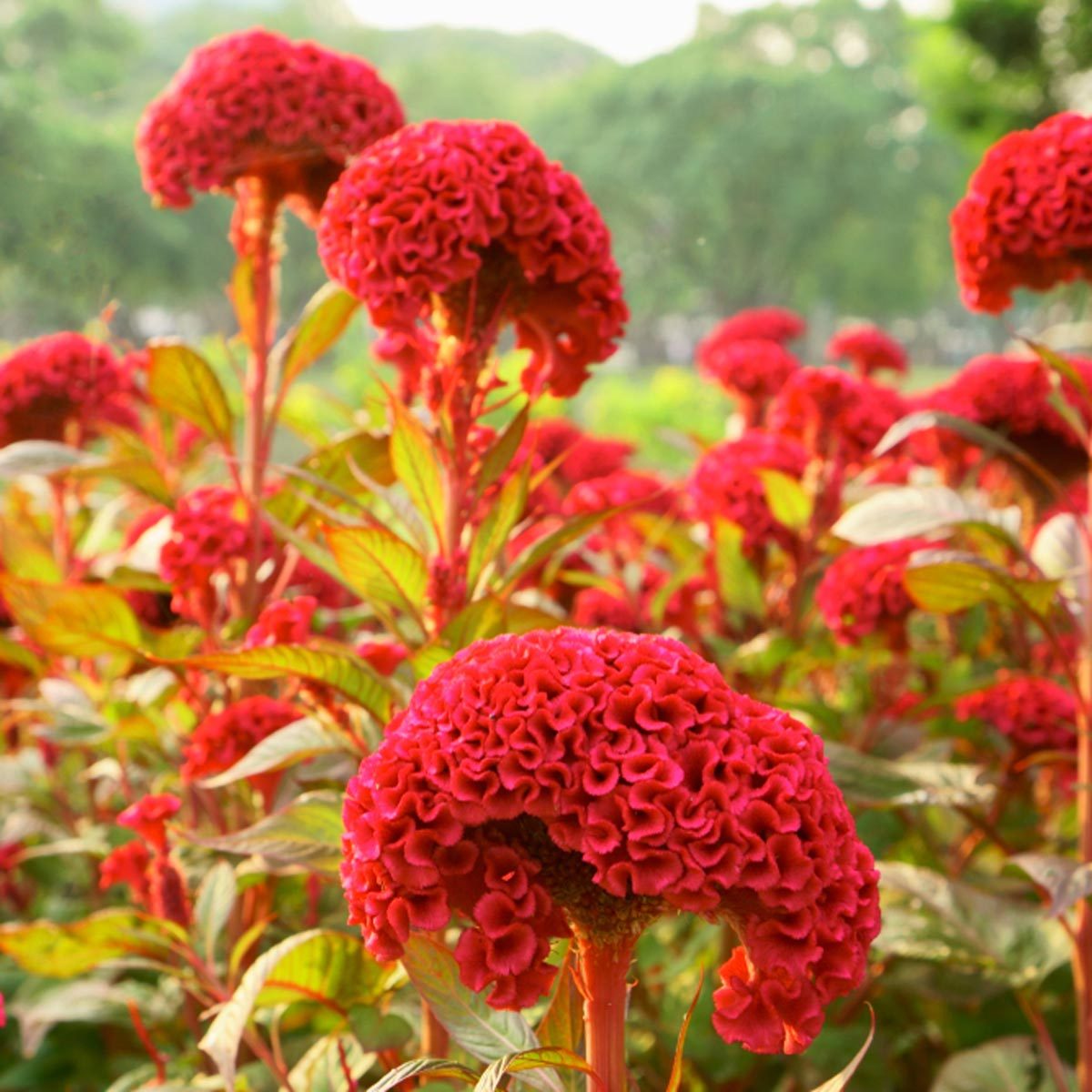
Celosia
Celosia is another rampant self-seeder that makes itself at home in your garden year after year. If so, consider yourself lucky, because the vividly coloured blooms on this plant are a pure delight. They feature a variety of colours—from burgundy, red, magenta and pink to cream, orange and yellow. Celosia offers different flower shapes, too. There are plumes, crests and spikes. No wonder this annual is loved by so many gardeners. There’s a size to fit any garden, from 6-inch dwarfs to 3-foot-tall specimens.
Interested in growing a healing garden? Consider adding these medicinal plants to your plot.
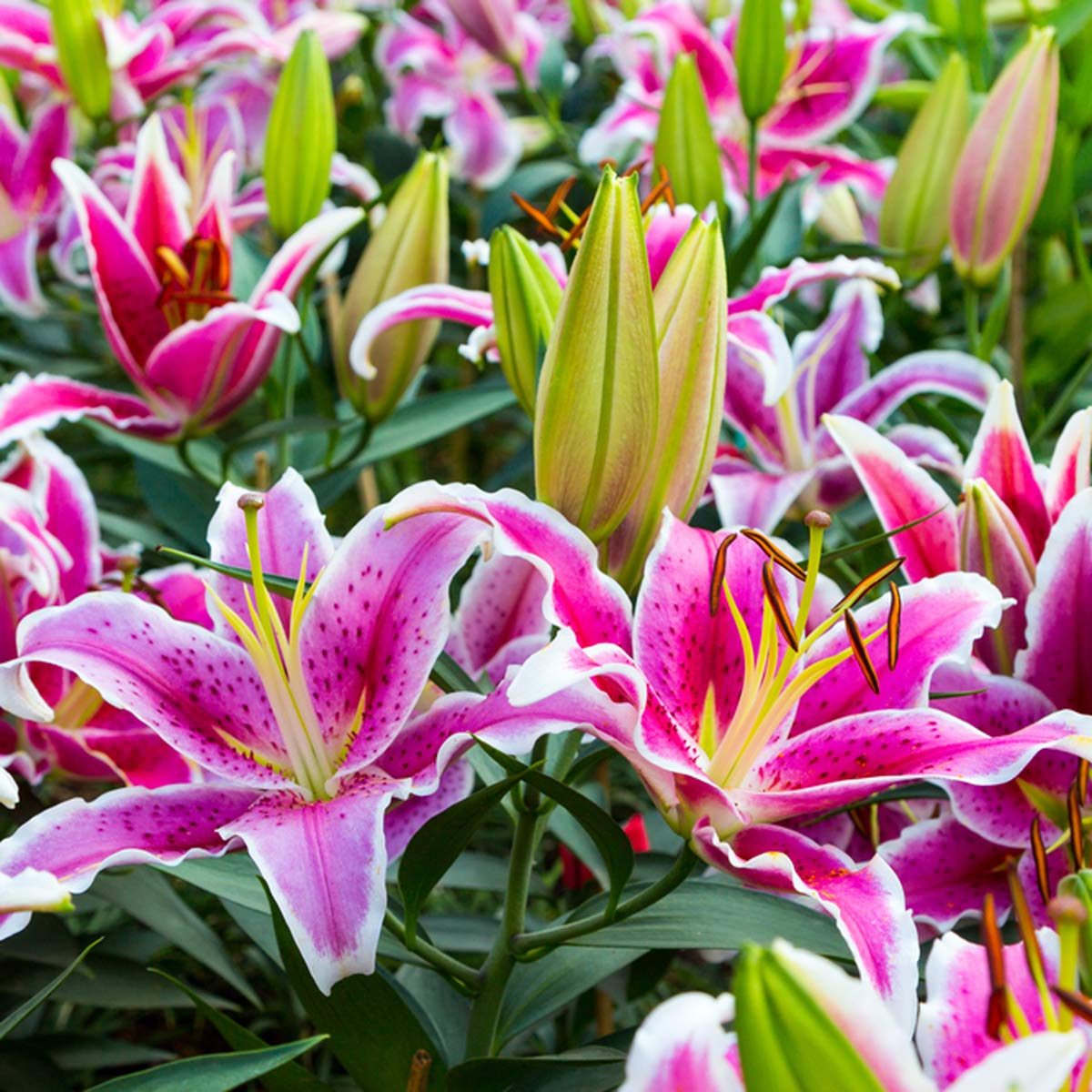
Lilies
Lilies (Lilium spp.) earn a special place in many gardeners’ hearts because of their captivating flowers. Not only are they bright and cheerful, they come in a range of colours, including pink, purple, red, orange and yellow. Asiatic lilies bloom in early summer, while the more fragrant Oriental lilies bloom from midsummer to fall. They are hardy in many areas of the country—Zones 3 to 8—so unlike many other summer bulbs you won’t have to dig them up in fall and store them for the winter in cold climates. (Here are tips on how to bring your garden indoors for winter.) One drawback: lilies are a favourite food of rabbits. To thwart the furry critters, spray the plants with repellent or rim with hardware cloth or chickenwire. Another option is to grow white clover in your lawn—rabbits favour that over other snacks.
Don’t forget, green is a colour too! If you want lush green grass, take heed of these 13 things you should never do to your lawn.
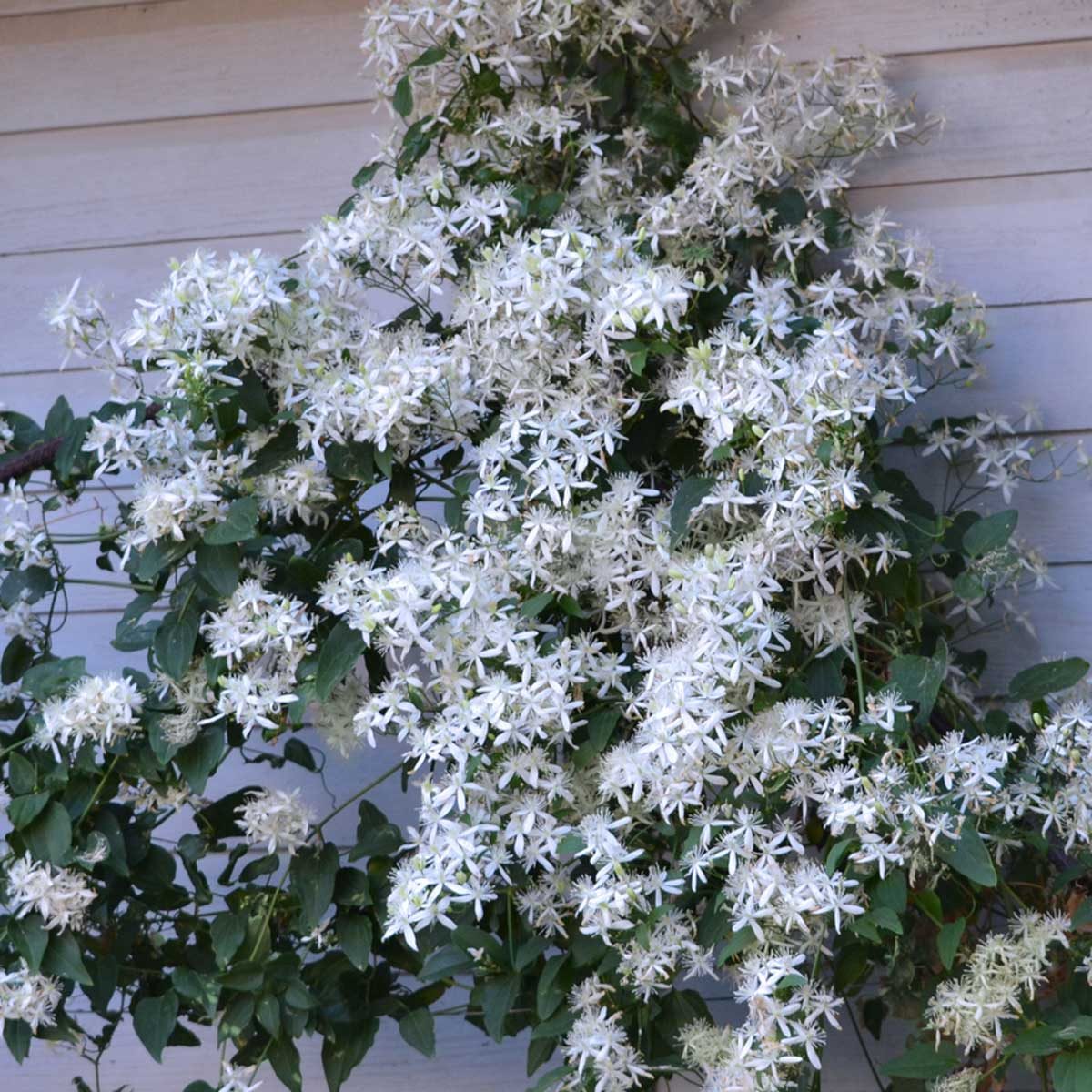
Sweet Autumn Clematis
Sweet Autumn Clematis (Clematis terniflora) is a vigorous grower that’s literally covered in white star-shaped flowers in late summer and early fall. The fragrant flowers give way to ornamental silvery seedheads. Sweet autumn clematis is a twining vine that can climb a support such as an arbour or fence or spread out on the ground as a groundcover. As such, it’s tailor-made for masking unsightly objects or blocking a view. It is a rampant grower, reaching anywhere from 15 to 30 feet, but reacts well to a drastic pruning done in late winter. Sweet autumn clematis is hardy in Zones 5–9.
Here are some simple landscaping ideas that will attract birds to your garden.
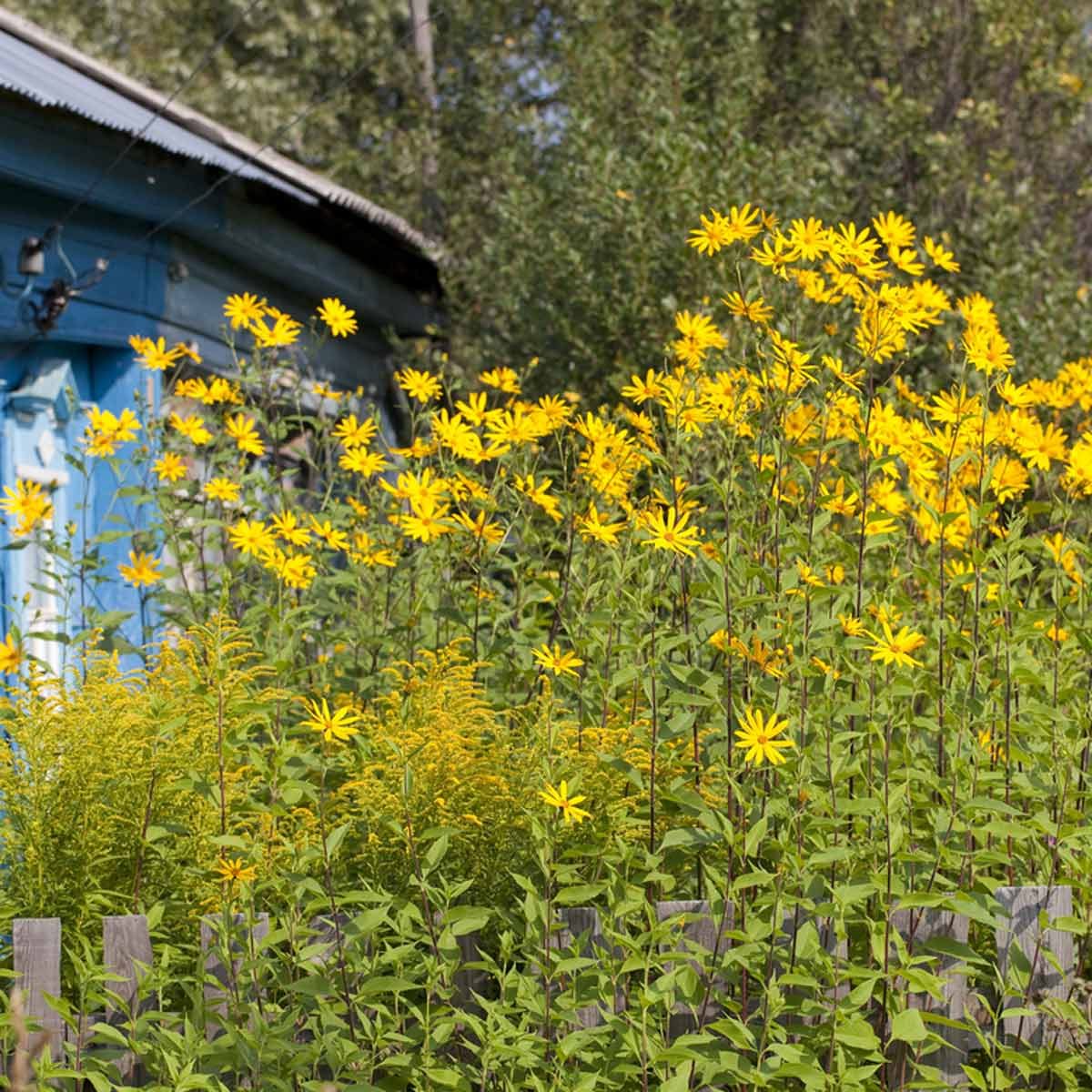
Jerusalem Artichoke
Jerusalem Artichoke (Helianthus tuberosus) isn’t from Jerusalem and isn’t an artichoke. It is a perennial sunflower with edible tubers, or root structures. Some have called it a weed, because it can colonize open fields. But Jerusalem artichoke, or sunchoke, is quite attractive when in bloom. The golden yellow flowers are an important source of nectar for pollinators when many other flowers are finished. (Here are 10 more bee friendly plants worth adding to your yard.) Jerusalem artichoke is a sturdy perennial reaching 6 to 8 feet tall if not cut back during the growing season, so it makes an excellent screen for sunny locations. Make sure it gets plenty of sun, though, because it will develop powdery mildew if it gets too much shade. Jerusalem artichoke is hardy in Zones 5–9. Here are eight of the best annuals for container gardening.
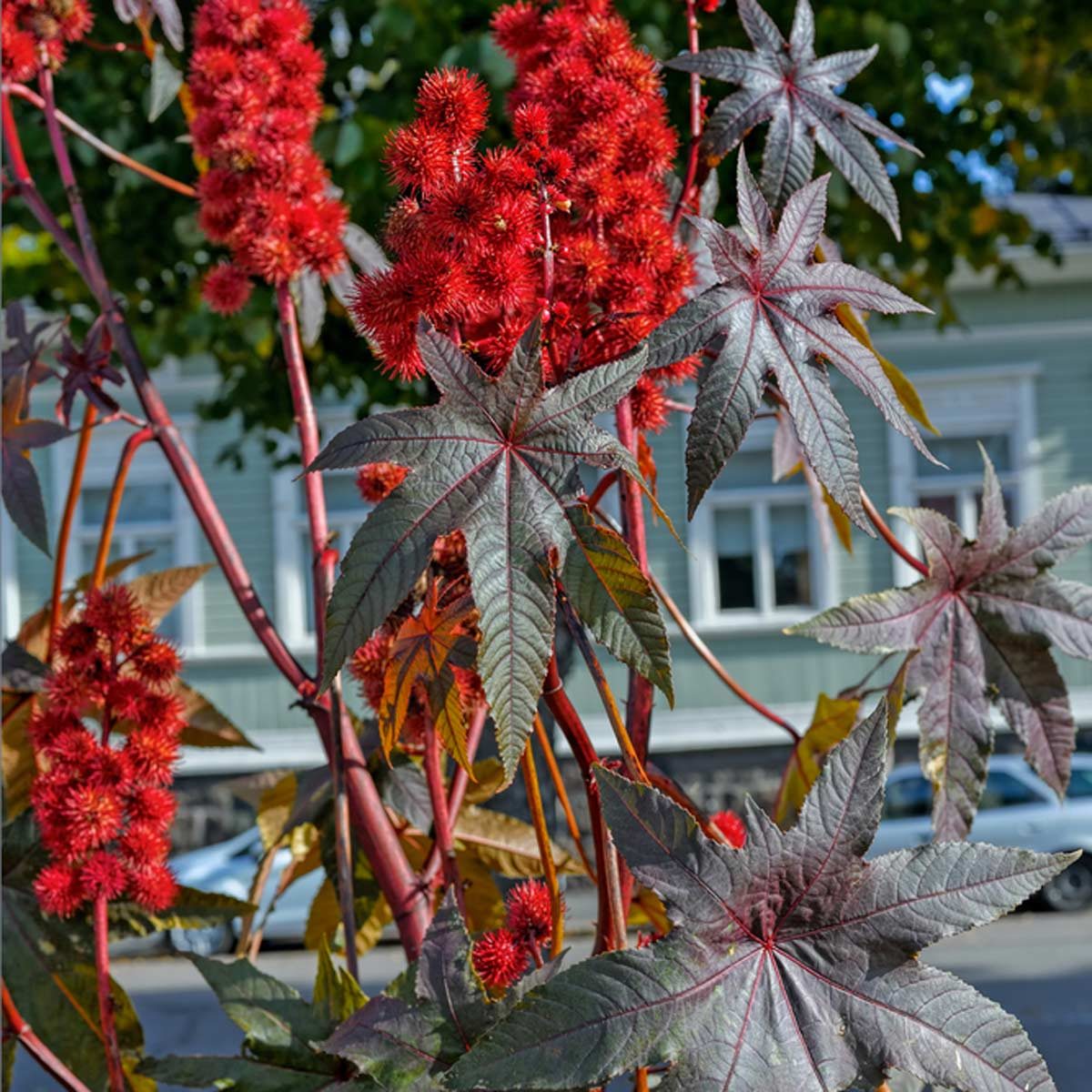
Castor Bean Plant
Castor Bean Plant (Ricinus communis) provides a touch of tropical drama anywhere—even in cold climates. A hardy treelike perennial in Zones 9–11, it is a quick-growing annual elsewhere, reaching 8 to 10 feet in one growing season. The leaves look like they came off a Japanese maple tree, except that they’re the size of dinner plates. They can be blue-green or burgundy, depending on variety. And the reddish brown seedpods look like something from another world. Note: all parts of the castor bean plant are poisonous.
Here are more great gardening tips that will save time and money.
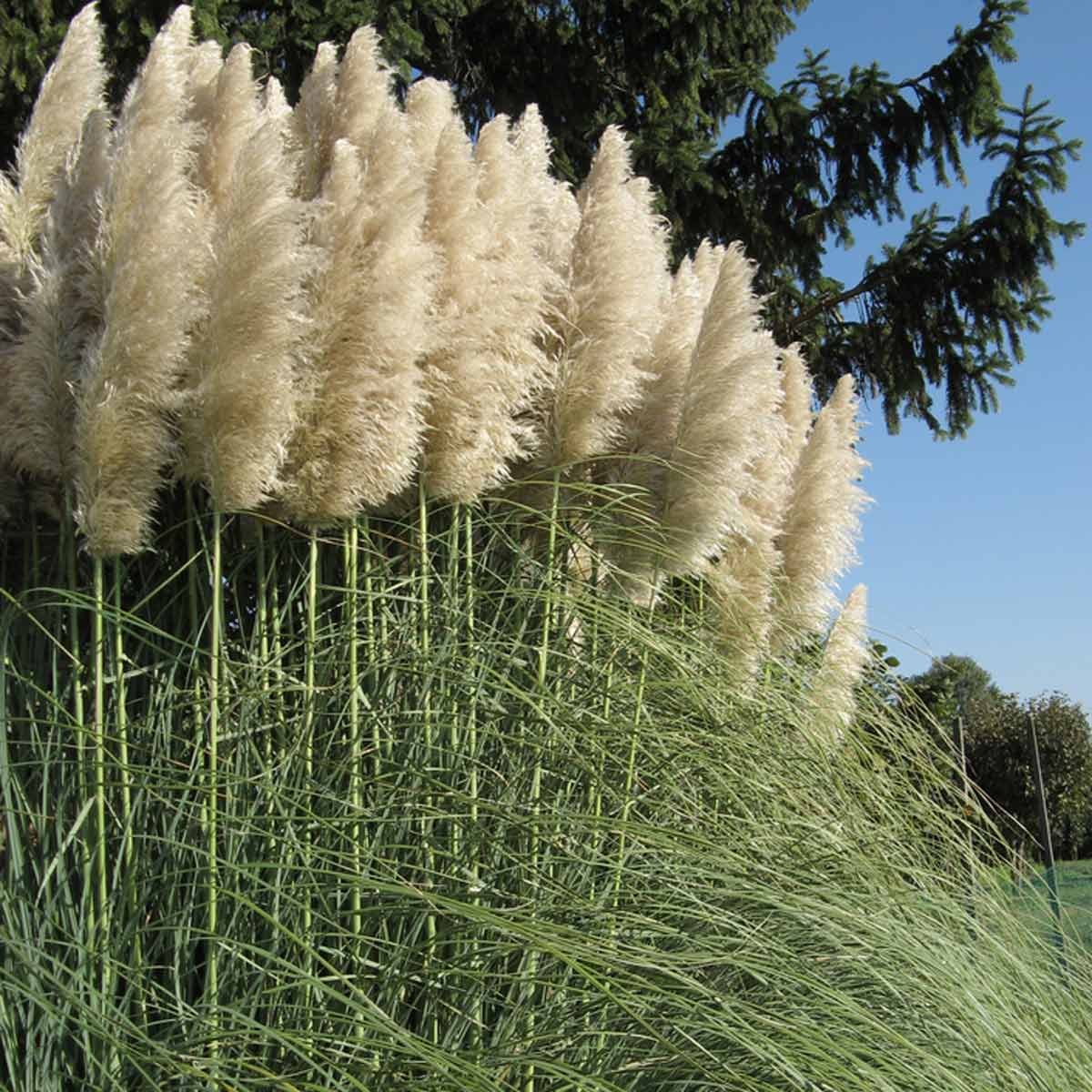
Pampas Grass
Pampas Grass (Cortaderia sellouana) is a tough and beautiful plant with a lot to like about it—as well as a few caveats to keep in mind. It’s tall and stately, reaching 10 to 12 feet in height and 5 feet in width, although some cultivars are half that size. Pampas grass is also an eyeful when unfolding its flower plumes in late summer, ranging in colour from silvery white to sandy tan. The plumes make good cut-flowers or can be left in place for winter interest. An upright grower with stiff stems, pampas makes a fine hedge or screen. The caveats: pampas grass can be a hassle to cut back (the blades are sharp) and it is an aggressive seed producer, making it a pest in some areas. Before planting, check with your local cooperative extension. Or look for a sterile cultivar.
Here are more genius gardening hacks you’ll be glad you know.
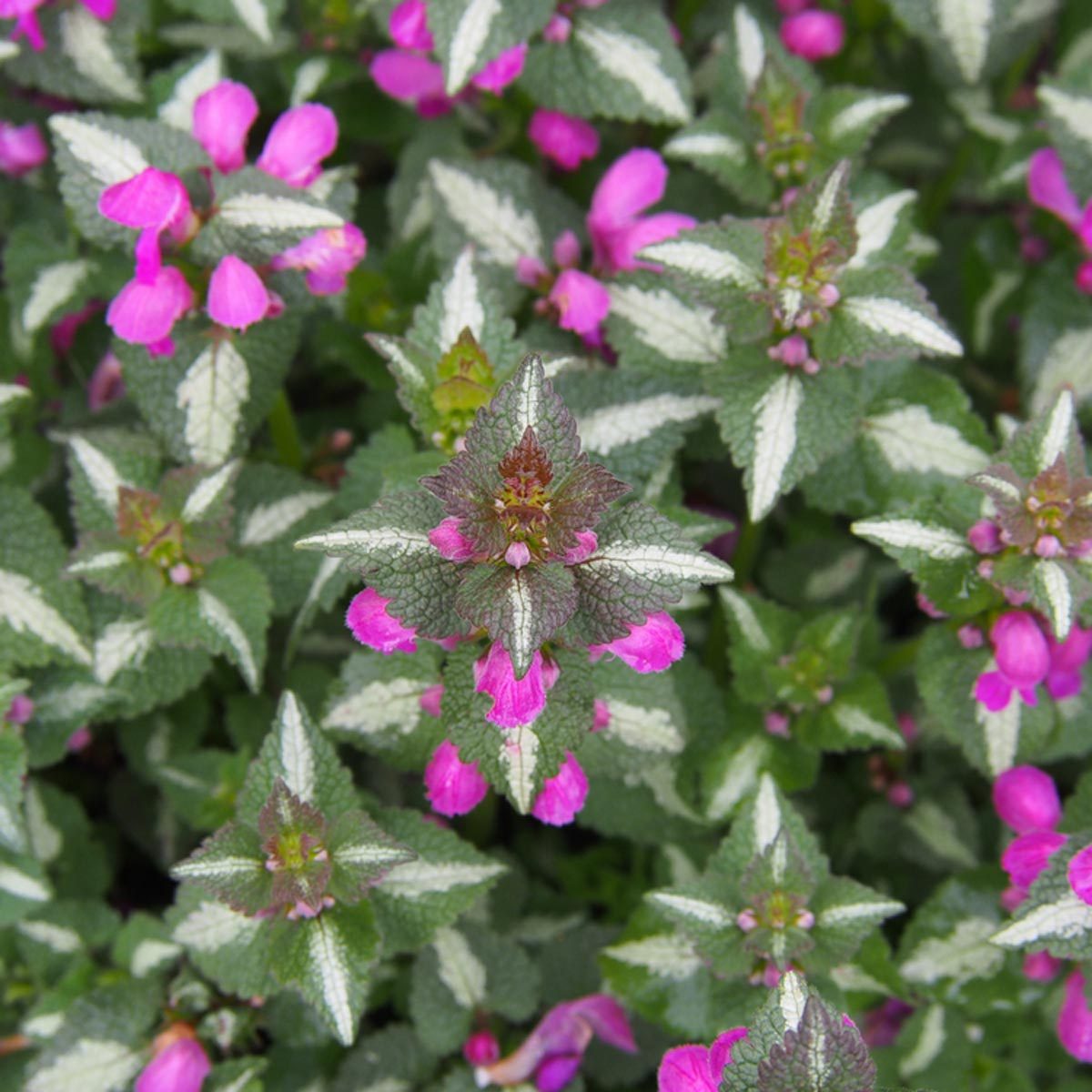
Lamium
Lamium (Lamium maculatum) differentiates itself from many other groundcover plants with eye-catching beauty that demands attention rather than taking a backseat to other plants. The secret is its foliage, which is variegated in different patterns and hues, depending on variety. The most popular lamiums are a mix of silver and green, but some now have a mix of lime and green. Then there are the bright pink, purple or white blooms that peak in spring but appear sporadically the rest of the growing season. Lamium spreads easily but is not invasive. It is hardy in Zones 4–8.
Looking for inspiration? Check out these garden design tips.
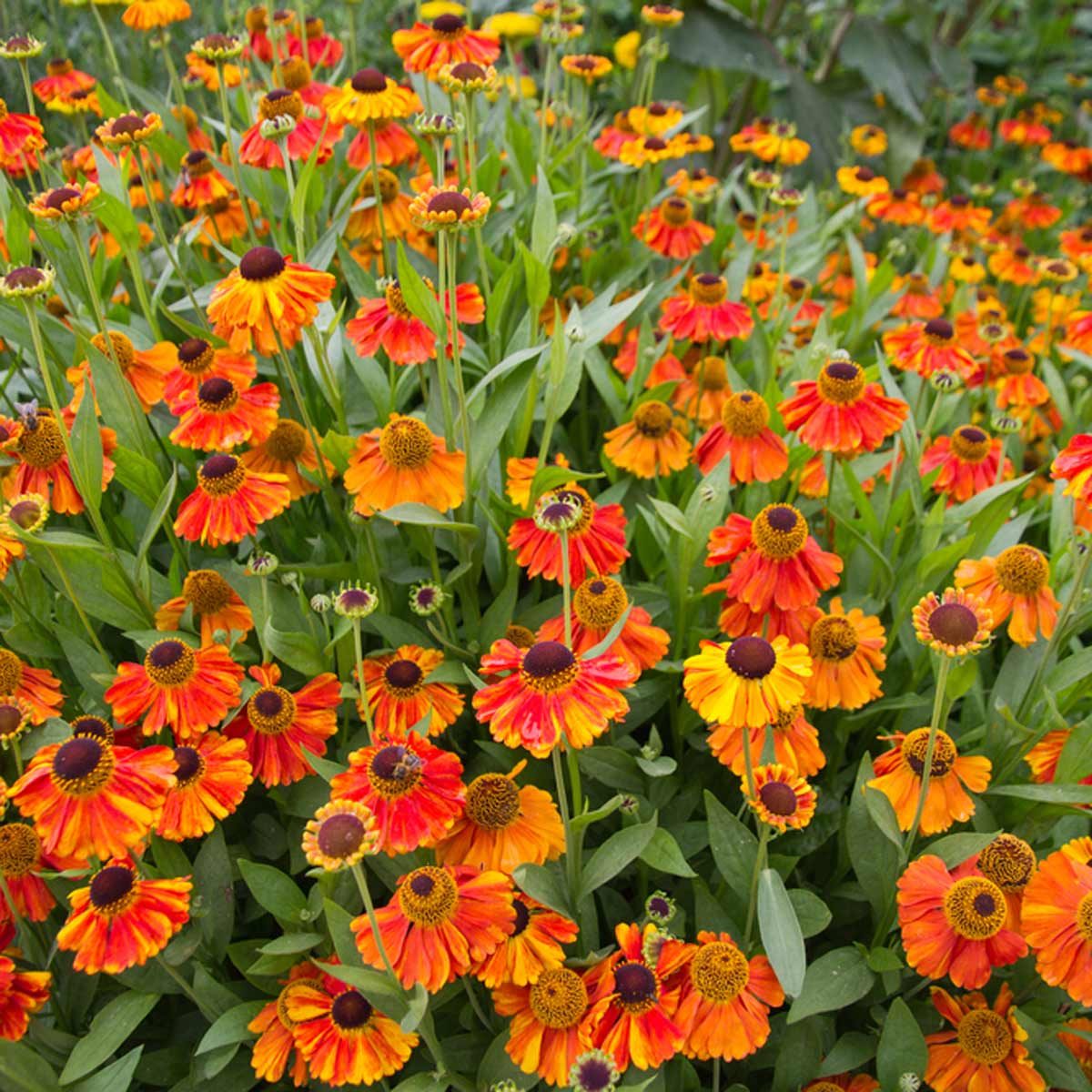
Helenium
Helenium (Helenium autumnale), also called Helen’s flower, is a late-summer showpiece that is exceedingly easy to grow. It boasts flowers with truly beautiful autumnal hues of gold, amber and mahogany—and it’s long blooming if deadheaded. Helenium typically grows 3 to 5 feet tall with stiff stems that seldom require staking. For shorter, bushier plants, you can cut stems back by half in early summer. Helenium is hardy in Zones 3–8. Meet more of the best summer flowers to grow in Canada.
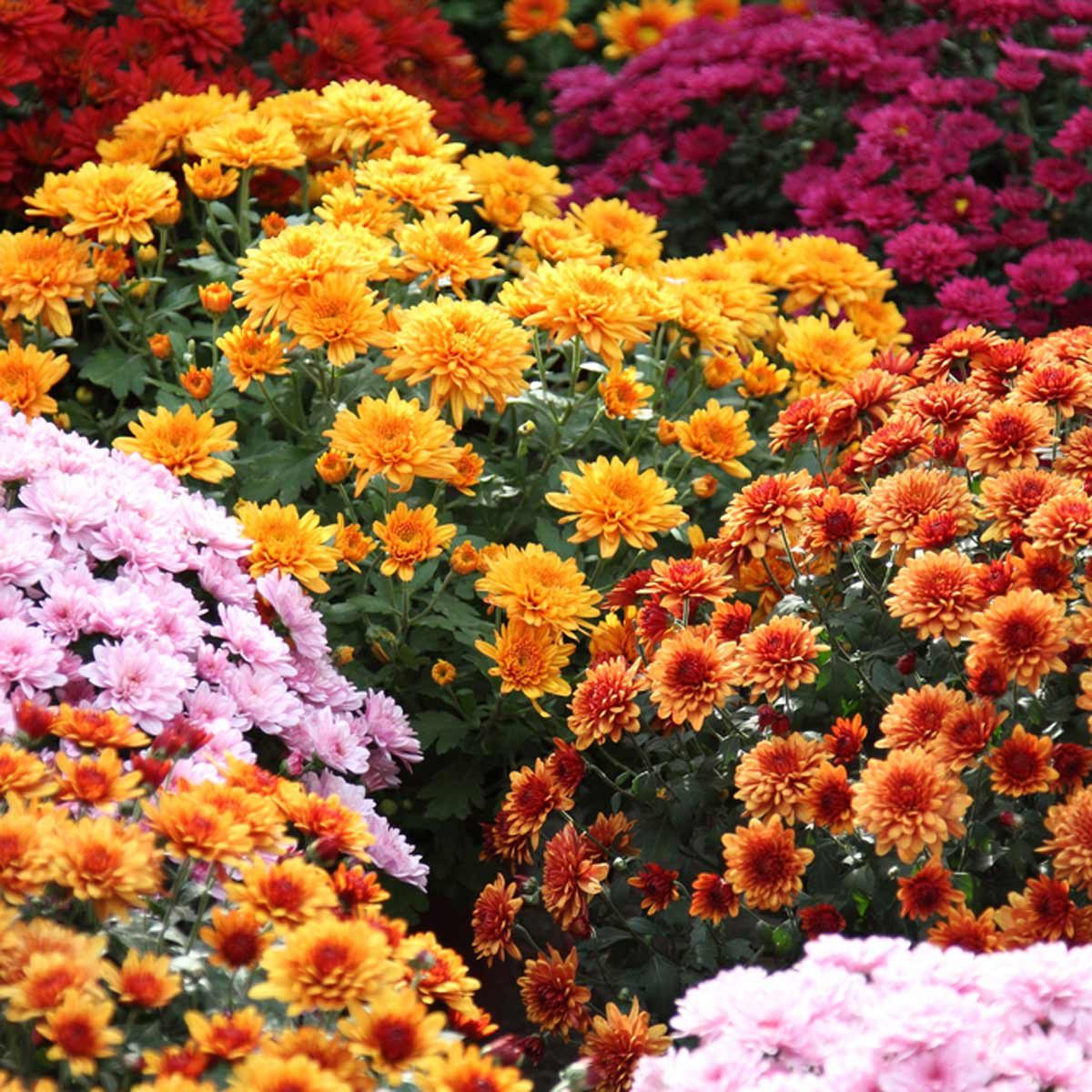
Chrysanthemum
Chrysanthemum is the undisputed king of plants in the fall garden—and no wonder, with its bright and festive colours, ranging from yellow, orange and red to pink, lavender and white. The trick to making chrysanthemum, or mum, a low-cost star in your garden is to plant it early in the season so the roots have time to spread out and increase the plant’s ability to withstand winter. If you’re buying mums in the fall (as most people do), they can either be treated as an annual or coaxed into returning in Zones 5–7 by storing them in an attached garage over the winter, keeping them just slightly moist. Cut them back in spring and plant in a permanent location. Next, check out 25 simple landscaping ideas for the perfect garden.